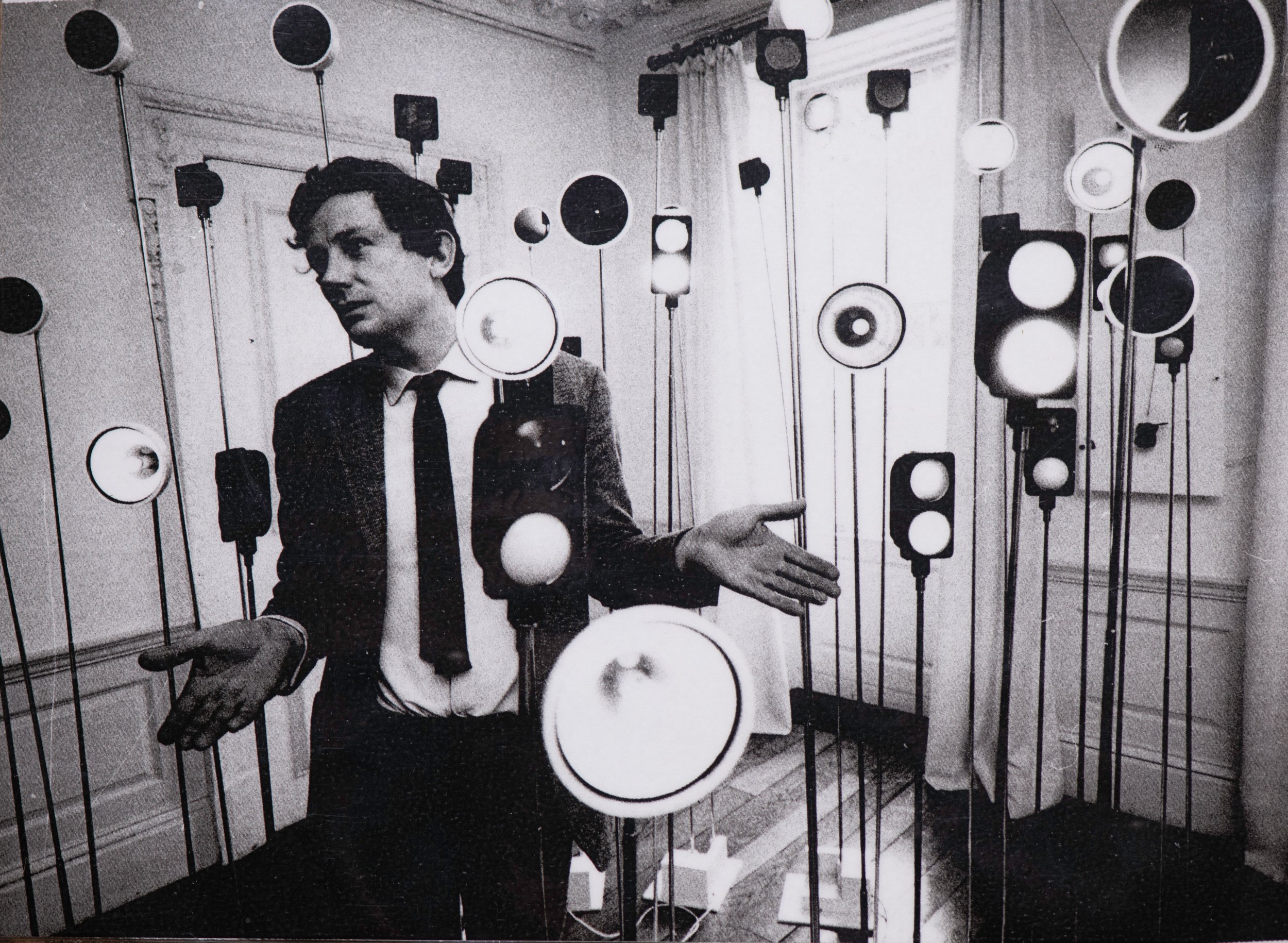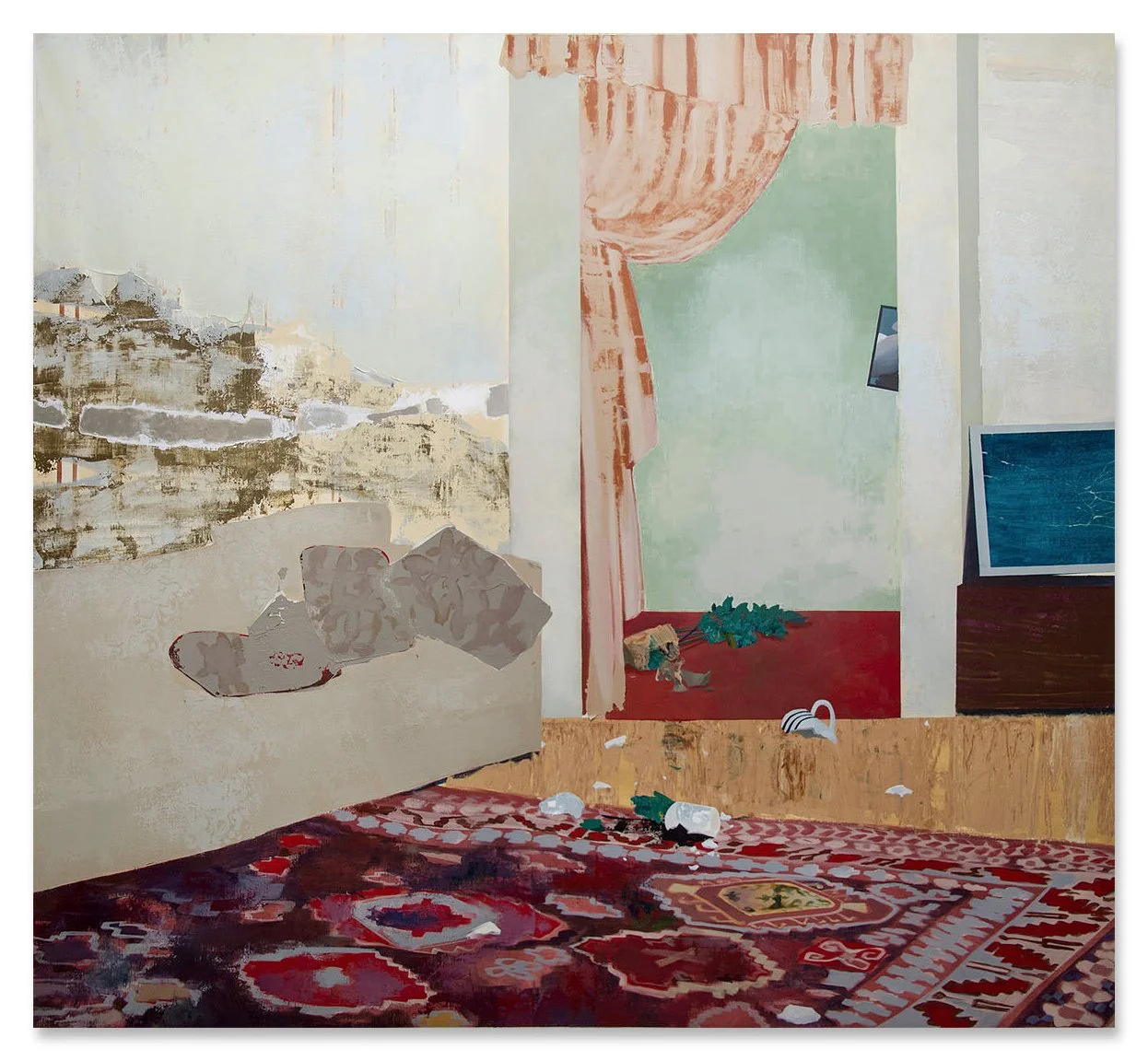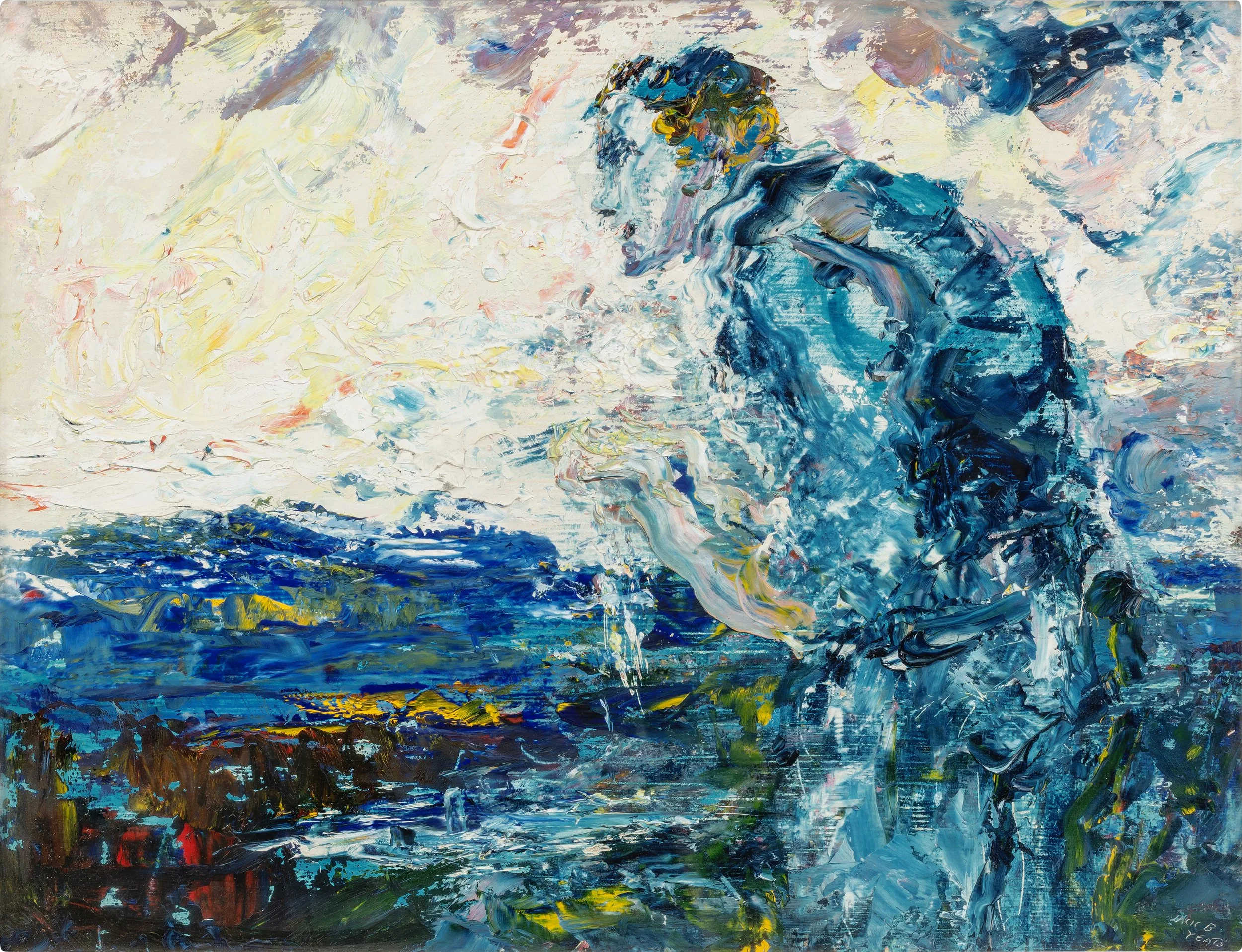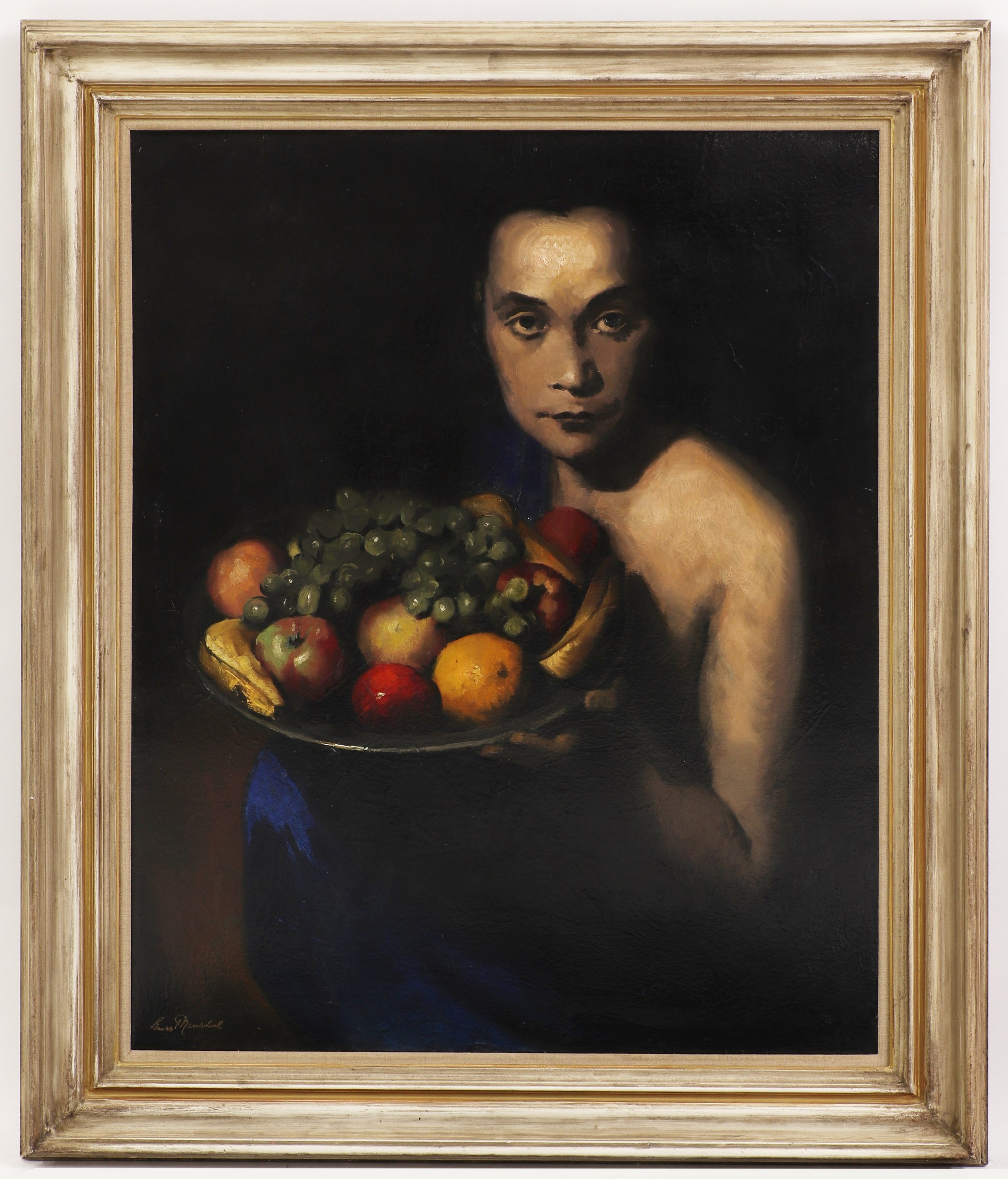BLAST #7
Welcome to BLAST Issue 7
May 2023
GALLERIES
Mel Gooding Tribute
Ceri Richards, Costerwoman, 1942. Ink and watercolour. Image courtesy of Jonathan Clark Fine ArtA touching tribute to the late art writer Mel Gooding is being staged this month at the South London home of dealer Jonathan Clark with an exhibition of previously unexhibited wartime drawings of tinplate workers and costerwomen by Ceri Richards (1903 -1971). A note in the catalogue quotes Henry Moore saying Richards’ “drawing is so assured, so full of energy and virility that gives his work a quality that goes way beyond charm… Ceri’s work has authority because of his drawing.” Still underrated, these drawings are selling for between £8,000 and £12,000. All have come from the Richards’ estate which is represented by Clark and handled by the artist’s daughter, Rhiannon, who was married to Gooding, who in turn wrote one of his many excellent artist monographs on Richards. Hence the tribute ‘In Memory of Mel’ in the catalogue. Brilliant with words, Gooding was also no slouch on the art market, as I learned through many conversations. So much so that leading art dealer, and former advisor to the 20th century British Art Fair, Peter Nahum, sought Gooding’s advice when compiling his collection of over 200 works by then less established modern and surrealist British artists, including Richards, which he sold at Christie’s in 2006 for £3 million. Gooding also served on the fair’s vetting committee and once surprised a senior dealer by telling them that their Mary Fedden, about whom he had also written a book, was a fake.
Mark Rothko X William Scott
Left- Mark Rothko, Untitled (Red, Yellow, Blue, Black and White), 1950, Oil on canvas, 67 1/2” x 38 1/4” Right- William Scott, Blue East, 1964, Oil on canvas, 73” x 48” ©William Scott EstateHow many artists bathe in the reflected glory of stars like the American Abstract Expressionist, Mark Rothko (auction record $87 million)? Some are simply pastiches, existing to decorate wall space. Others bear more serious consideration accruing value by association. Thus New York dealer, Anita Rogers finds it stimulating to pair British artist William Scott (auction record a mere £1 million) with Rothko in her latest exhibition which runs until 3 June. The two crossed paths on both sides of the Atlantic in the 1950s, corresponded and compared notes. The pairing will, says Rogers, “solidify [Scott’s] significance, and offer new insight into their relationship and mutual admiration.” At the exhibition, Scott’s work is priced from $450,000 to $1 million plus.
Mark Rothko X John Hoyland
Meanwhile, Hales Gallery, with the help of roving curator, Phillip Dodd, has managed to place the work of the late John Hoyland (1934-2011) in the Mark Rothko Art Centre, in Daugavpils, Latvia, (Rothko’s birthplace) where it hangs next to original works by Rothko in an exhibition entitled ‘The Doors of Perception’ which continues into September. Hoyland’s peak (auction record £155,000 in 2008) happened when his market was set alight with news that Damien Hirst was investing in it, and is now taking on a new lease of life since Hales took on representation of the artist’s estate in 2021. With this show, Hoyland’s work is reaching an area where it had not previously reached. Hales director Paul Hedge comments: “Hoyland's work has extended way beyond Britain and America in the time since we have been working with the estate. We now have an active market among Japanese collectors, Spanish collectors and Hoyland's late work seems to have acquired a great deal of admiration among the South Asian collectors too.” The work in Latvia is not for sale, but large works generally are priced between £90,000 and £200,000.
John Hoyland Diamond Days, 1982. 8 x 7 foot. copyright John Hoyland Estate/photo- Colin MillsArt for All
Jeremy Fry with Takis Signals, Widcombe Manor, Bath 1967A fascinating glimpse into a brief attempt to democratise the latest contemporary art in the mid-1960s is currently on view at the Assembly Rooms in Bath. The exhibition, ‘Unlimited: Art for All in 1960s Bath’ is compiled by Cosmo and Francis Fry, the sons of Jeremy Fry, a scion of the chocolate making family, an inventor and art lover who turned over his Georgian mansion, Widcombe Manor in Bath, to the manufacture of affordable editioned works of art by cutting edge kinetic and constructivist artists. It is the first time that all 22 multiples by the artists have been shown together. Ironically, what was made for mass consumption has become rare and collectable. Of the kinetic works, Liliane Lijn’s revolving Liquid Reflections, was priced at £25 and sold about 100 editions. Examples on the market now are rare in working condition, (they fetch up to £5,000 at auction) and the example on view in Bath, which was remade in 1995, has been lent by the Arts Council. Lijn is now represented by England & Co. The best seller of the eight was the Greek artist Takis, whose Signals, lights on telescopic poles that flashed in response to movement, were priced at £12 each sold around 500 copies. They now retail for around £20,000 if in good condition. The Takis estate is managed by White Cube.
Most established constructivist artists were Kenneth Martin (estate now handled by Annely Juda - one of his 100 or so Screw Mobile multiples from the late Penny and Pat Allen collection sold at Sotheby’s in March for £4,375) – and his wife, Mary Martin. Her Rotation multiple cost just £8.10 each and sells for up to a very reasonable £2,000 at auction, or can be found in various galleries. Little known now are David Hockney’s assistant, Mo McDermott, Susan Tebby, who today is the go-to conservator and restorer of kinetic works of art for the salerooms when they appear at auction, and Michael McKinnon, who gave up sculpting to make films. Although not publicised as a selling exhibition, several of the exhibits are available for sale through the Fry family who have been safeguarding and conserving them.
Aubrey Williams Towakaima, 1967 Gouache on paper 56 x 73 cm © Estate of Aubrey Williams. All rights reserved, DACS/Artimage 2023. Courtesy October Gallery, London Photo © Jonathan Greet.Tate Rehang
Museum recognition is coming to at least two immigrants to the UK from overseas (a theme to be explored in next September’s British Art Fair) in Tate Britain’s forthcoming rehang on May 23. Here, a whole room has been devoted to the Guyanese abstract expressionist artist, Aubrey Williams (1926-1990), who came to Britain in 1952. It took the auction market 25 years following his death to register a price in four figures, and then until last year, when he was included in Tate Britain’s ‘Life Between Islands: Caribbean-British Art 1950s – Now’ exhibition, to reach five. The October Gallery has represented Williams since 1984, and his estate subsequently, and will be exhibiting newly discovered, ecologically conscious abstractions at the gallery from mid-June to the end of July.
Mohammed Sami, Family Issues 1, (2019)Included in the rehang is 39-year-old figurative painter, Mohammed Sami who fled his native Iraq in 2007 as a refugee to Sweden and then to London. Sami is already steps ahead of Williams with representative galleries in London (Modern Art) and New York (Lehmann Maupin), a widely admired show at the Camden Arts Centre, and a blistering auction debut of £355,600 for a large painting at Sotheby’s in March. The almost 8-foot square Family Issues 1, (2019), estimated at £50/70,000, had been bought from the Patrick Heide Contemporary Art in NW5 in 2021 for just £13,000 plus VAT.
AUCTIONS
BLAST has been following the progress of lesser-known British surrealist artists and can report further improvement in the market for Marion Adnams (1898-1995) whose La Ronde, 1963, an image of dancing, truncated trees, sold for a record £28,600 (estimate £6/8,000) at Roseberys in March.
Marion Adnams, British 1898-1995 - La Ronde, 1963; oil on board, signed lower left 'Marion Adnams' and inscribed with title, date and artist's address on the reverse of the frame, 76 x 101.8 cm Image courtesy of Rosebery’s Fine Art AuctioneersAnglo-Franco-Irish Entente Holding Tight
Jack B. Yeats, Come on the Dawn, caption as in text. Courtesy Sotheby'sIs Sotheby’s thinking of splitting its Irish sales between London and Paris, permanently? Last year it did so for the first time in honour of the centenary of the 1922 World Congress of the Irish Race and the publication in Paris of Ulysses by James Joyce, the Irish giant of modern literature who made Paris his home. The Paris sale, ‘Ireland/France: Art & Literature’ made 986,000 Euros but six of the top seven estimated lots by Roderic O’Conor, Sir John Lavery and Louis Le Brocquy, who all worked in France, failed to sell. The regular annual London sale, held in November and having ceded the most valuable works by Jack Yeats and Dillon to its sister Modern British and Irish art sale, came in slightly behind Paris at £721,000. The results were still deemed sufficiently encouraging for the company to repeat the performance this year, opening online in Paris on May 10 with a suit of French subjects by Irish artists, such as young painter, Jack Coulter’s portrait of Edith Piaf which sold within estimate for 15,240 Euros. This time there were no major unsold lots to report and a consistent total of 876,000 Euros, but no fireworks. “The lion’s share of bidders were from Ireland and the UK,” concurred Sotheby’s. Top lot was a late, emotive figure painting by Jack Yeats, Come on the Daw, 1951, which sold for 241,300 Euros. It had cost the buyer £157,500 in 2001. Whether this was all enough to sustain an ongoing Anglo-Franco-Irish entente remains to be seen.
Ernest Neuschul (1895-1968), Woman holding a bowl of fruit , £29,900 (inc. BP), Sworders, Stanstead Mountfitchet, April 25New records for ‘degenerate’ Neuschul
A painting of a woman holding a basket of fruit by the Anglo Czech painter, Ernst Neuschul (1895-1968), set a ten-times estimate record of £29,000 in April at Sworders in East Anglia, selling to a buyer from the Czech Republic. As a Jew and labelled a ‘degenerate’ artist from his association with the ‘New Objectivity’ movement in 1920s Germany, Neuschul fled Prague in 1939 and settled in Swansea, and then, after the war, in Hampstead. Never successful commercially in his lifetime, his first significant auction price was in 2006, when the Leicester Museum and Art Gallery bought his slightly manic, sinewy self-portrait, Messiah, for 9,600 Euros at a sale in Amsterdam. That record rose to 17,000 Euros in Germany in 2021, and was then doubled in Cambridge last month. Perhaps things are looking up for the Neuschul market.
Colin Gleadell is the art market columnist for The Daily Telegraph and a regular contributor to Artnet News, Art Monthly, and Artsy. Prior to The Telegraph, he worked for the Paul Mellon Foundation for British Art as a researcher, the Crane Kalman Gallery as a gallery manager, and Bonhams auctioneers as Head of Modern Pictures. He worked for ten years (1986 – 1997) as the features editor of Galleries Magazine, whilst also contributing to leading art market publications such as Art & Auction and Art News where he was the London correspondent of the Artnewsletter. He Introduced Sister Wendy Beckett to the BBC for whom he worked as a consultant on market programmes such as the Relative Values series (1991). He also worked as an art market consultant for Channel 4 News.
Gleadell was on the original advisory committee for the 20th Century British Art Fair in 1988, where he has served ever since as it changed its name to the 20/21 British Art Fair, and now British Art Fair.









